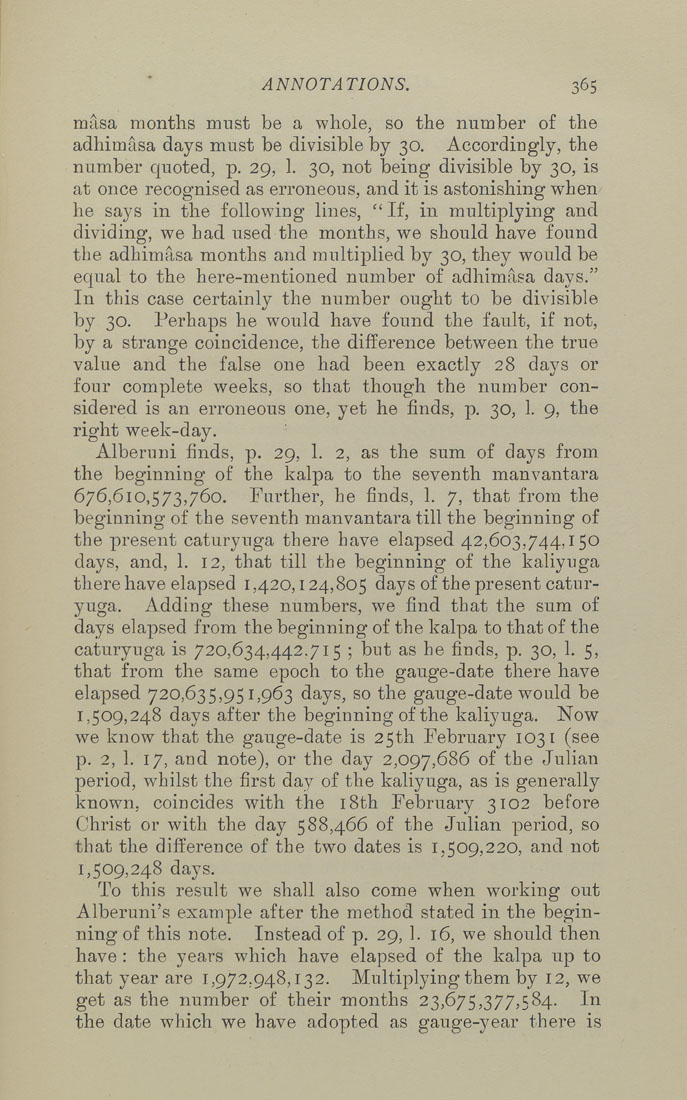ANNOTATIONS. 365
masa months must be a whole, so the number of the
adhimasa days must be divisible by 30. Accordingly, the
number cjuoted, p. 29, 1. 30, not being divisible by 30, is
at once recognised as erroneous, and it is astonishing when
he says in the following lines, " If, in multiplying and
dividing, we had used the months, we should have found
the adhimasa months and multiplied by 30, they would be
ecjual to the here-mentioned number of adhimasa days."
In this case certainly the number ought to be divisible
by 30. Perhaps he would have found the fault, if not,
by a strange coincidence, the difference between the true
value and the false one had been exactly 28 days or
four complete weeks, so that though the number con¬
sidered is an erroneous one, yet he finds, p. 30, 1. 9, the
right week-day.
Alberuni finds, p. 29, 1. 2, as the sum of days from
the beginning of the kalpa to the seventh manvantara
676,610,573,760. Further, he finds, 1. 7, that from the
beginning of the seventh manvantara till the beginning of
the present caturyuga there have elapsed 42,603,744,150
days, and, 1. 12, that till the beginning of the kaliyuga
there have elapsed 1,420,124,805 days of the present catur¬
yuga. Adding these numbers, we find that the sum of
days elapsed from the beginning of the kalpa to that of the
caturyuga is 720,634,442.715 ; but as he finds, p. 30, 1. $,
that from the same epoch to the gauge-date there have
elapsed 720,635,951,963 days, so the gauge-date would be
1,509,248 days after the beginning of the kaliyuga. Now
we know that the gauge-date is 25th February 103 i (see
p. 2, 1. 17, and note), or the day 2,097,686 of the Julian
period, whilst the first day of the kaliyuga, as is generally
known, coincides with the 18th February 3102 before
Christ or with the day 588,466 of the Julian period, so
that the difference of the two dates is 1,509,220, and not
1,509,248 days.
To this result we shall also come when working out
Alberuni's example after the method stated in the begin¬
ning of this note. Instead of p. 29, 1. 16, we should then
have : the years which have elapsed of the kalpa up to
that year are 1,972.948,132. Multiplying them by 12, we
get as the number of their -months 23,675,377,584. In
the date which we have adopted as gauge-year there is
|








